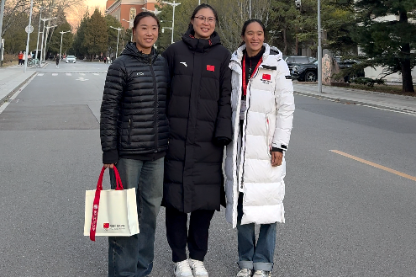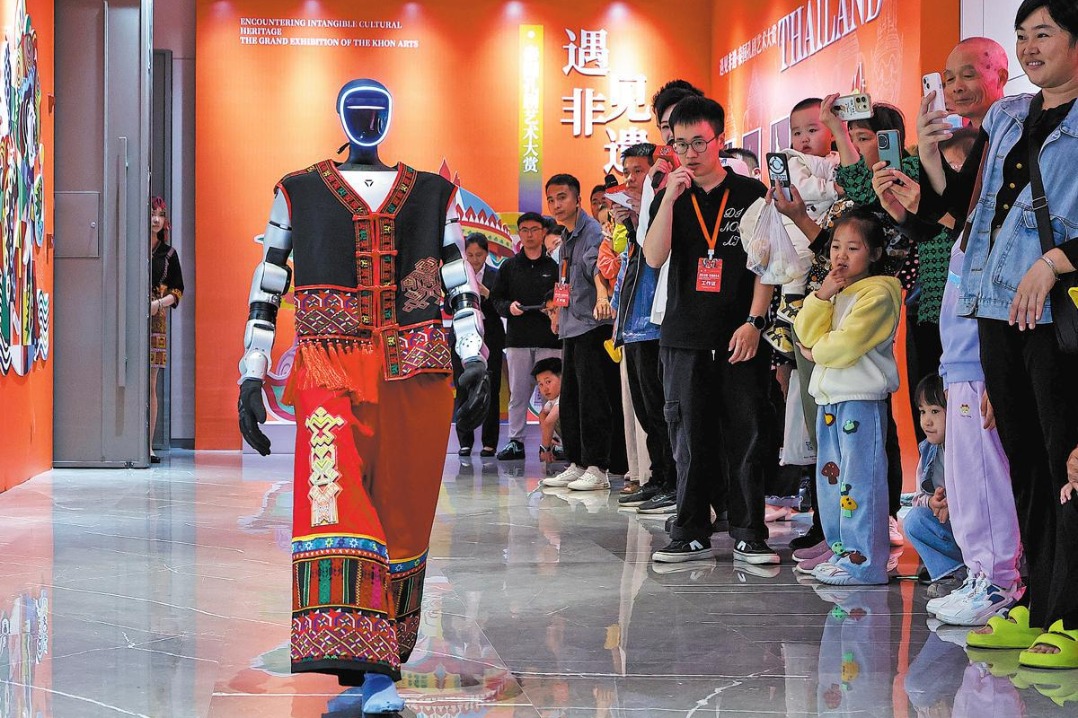Making robots a part of every family

Editor's note: While revisiting some of the startups we've featured in our innovation column, we've witnessed the amazing growth of intelligent robot "Walker" in the past five years. Its founder Zhou Jian said service robots will enter a golden development era this decade.

"Walker" can do astonishing jobs — it can open doors, take out a bottle of beer from a refrigerator, pour a cup of tea and carry bags.
It's a tireless, accurate intelligent humanoid robot that's adaptable with various skills. The 1.45-meter-tall machine was developed by Ubtech Robotics — a Shenzhen-based high-technology firm.
The "Walker" project started in 2015 when the author first interviewed Zhou Jian, the startup's founder. The company has since devised an array of robots, including an intelligent commercial service device called "Cruzr", as well as epidemic prevention and four-legged robots.
However, it hasn't all been plain sailing for the company in developing "Walker". It hit a bottleneck because of complicated technology problems and failed to make the grade in the first year despite the injection of substantial capital and time.
Besides, using humanoid robots for commercial purposes remains a challenge for robot makers around the world. Some are developed for military use, while others are too expensive to be commercially viable.
Zhou said there was a time when they contemplated scrapping the project as the technology in the industry wasn't mature enough and that they shouldn't have invested so much in research.
"But, in our industry, walking away from cutting-edge and innovative technologies would mean a dead end," said Zhou. "If we don't do it now, there'll never be such an opportunity again in the future."
Zhou is an innovator who doesn't like emulating others, but focuses on long-term goals persistently. "I'll never give up on a long-term investment because of short-term difficulties."
At his insistence, the team continued to invest heavily in "Walker" and developed high-performance servo actuators and algorithms for movement control, computer vision, autonomous navigation and positioning.
The first "Walker" debuted in 2018 as a bipedal robot. The following year, it had arms and hands that could grab objects in coordination with its "eyes."
"Walker" was listed as one of five humanoid robots to keep an eye on by the Robot Report in 2019 and was the only one developed by a Chinese mainland company. But the question is: When can Ubtech Robotics make good on its promise to make "Walker" an "indispensable part of your family"?
Zhou said he's confident that large humanoid robots can be used in certain business sectors from 2025 to 2030.
According to a report by global research company MarketsandMarkets, the humanoid-robot market is expected to grow from US$202.2 million in 2016 to US$3.96 billion by 2023 at an impressive compound annual growth rate of 52.1 percent between 2017 and 2023.
As for the general service robot sector, Zhou said that the decade from 2020 to 2030 will be a "golden era" for the industry's development, and trillion-yuan behemoth enterprises will emerge.
He noted that huge investments have poured into the industry since 2010, and a large number of previously accumulated technologies have landed in various business sectors.
However, Zhou said he believes there won't be any absolute hardware technology advantages in the future, just like the smartphone and automobile businesses.
Those that rely on just selling individual products won't survive, he predicts. His answer is providing comprehensive and customized solutions for application in different scenarios.
Citing youth education and care for the elderly as examples, Zhou said his company may help equip schools and nursing homes with an integrated robotic system instead of merely selling them robots.
Ubtech Robotics has designed a series of hardware, curriculums, training lessons and competitions on artificial intelligence robotic education for students from elementary schools to higher educational institutions. More than 1.5 million youths worldwide have so far taken courses in AI and robot development.
This year, the company plans to unveil a host of elderly care solutions and launch its first pilot project.
For Zhou, the challenges are how to match their technology development with actual market needs, and make robots more acceptable to consumers. The coronavirus outbreak has offered a silver lining by expediting and expanding the application of service robots in healthcare and public facilities.
Early last year, the Shenzhen enterprise developed AI epidemic prevention robots that have now been used in major cities on the mainland, including Shenzhen, Wuhan, Guangzhou, Chongqing, Kunming and Beijing, as well as overseas.
The robots can carry out high-frequency and high-exposure work, such as monitoring body temperatures, broadcasting information and disinfecting public places.
Zhou predicts that service robots will replace humans in performing relatively simple and repetitive nursing tasks in future.
"Our vision is to bring intelligent robots into every family," he said.
- China innovates network technology, achieving efficient data transmission
- More international maritime disputes turn to China's courts
- Chinese researchers inject AI power to evidence-based medicine
- Harbin Ice and Snow World opens with expanded park
- Visa-free transit policies spur surge of foreign visitors
- China to enhance capabilities in coping with extreme weather





































